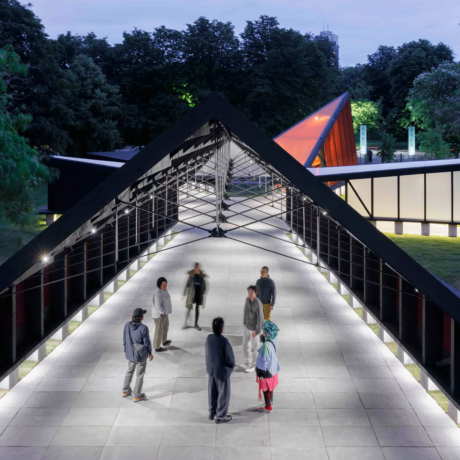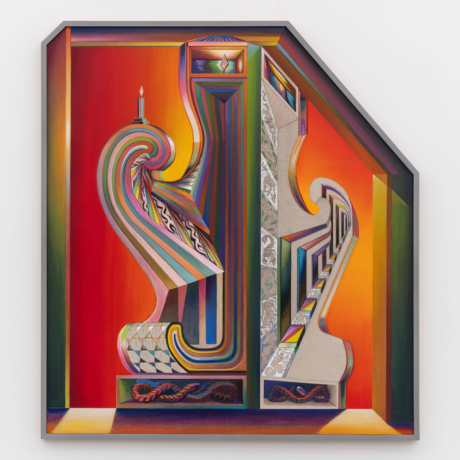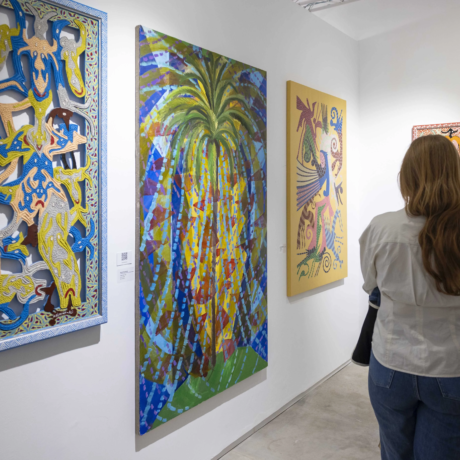The 2024 Serpentine Park Nights season, curated by Claude Adjil, begins on Friday 28 June with the UK premiere of North Korea Dance, a performance by choreographer Eun-Me Ahn and her company.
Phin Jennings spoke with the Serpentine’s Artistic Director Hans Ulrich Obrist about creative cross-pollination, long-term thinking and his dream booking: a Lana Del Rey poetry reading.
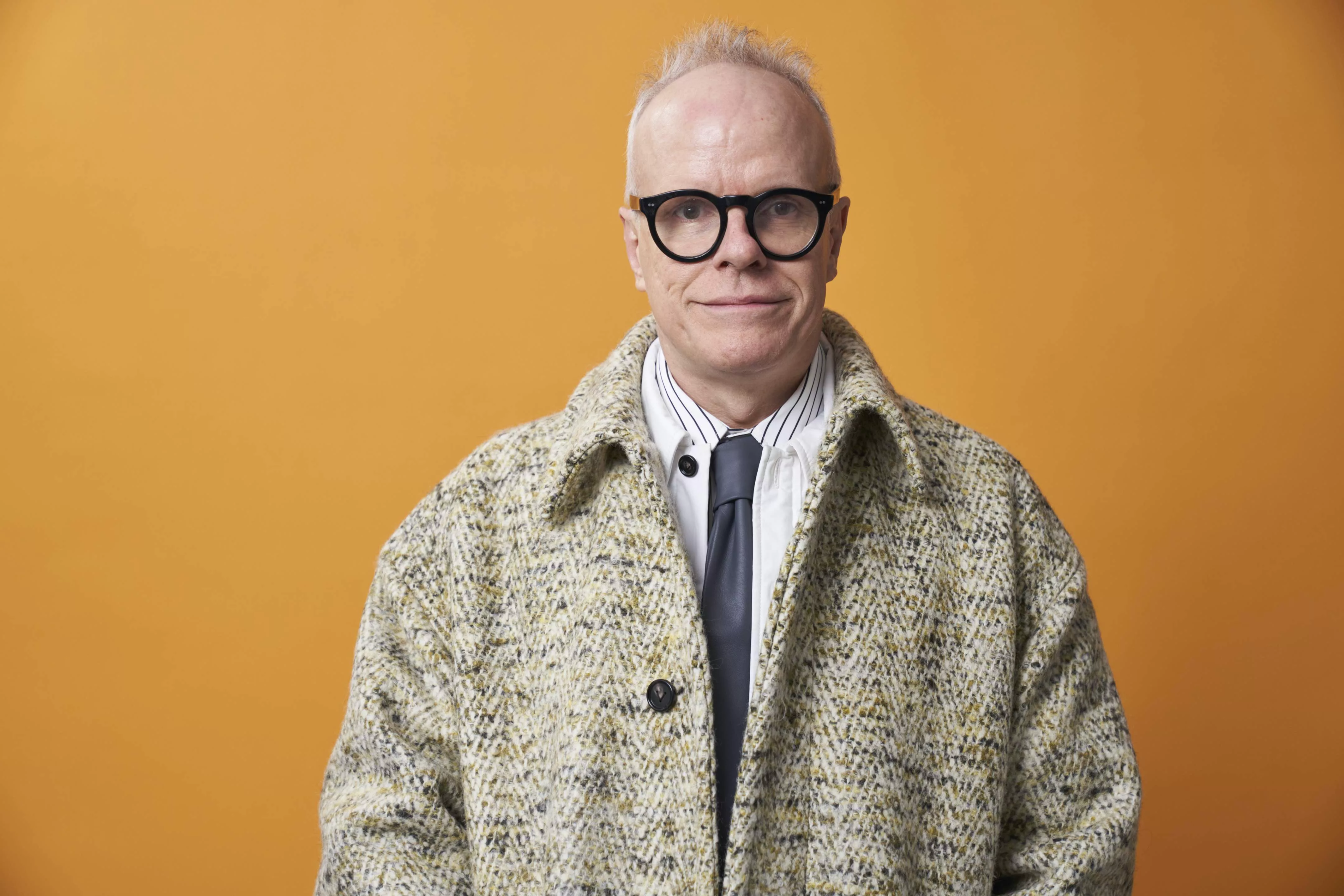
Hans Ulrich Obrist has a lot on his mind. I call him to speak about this year’s Serpentine Pavilion, Archipelagic Void designed by Korean architect Minsuk Cho, and the events that it will host this year. My idea for the interview is to discuss Obrist’s ideal festival, but our conversation quickly begins to sprout many tangential tendrils.
Its remit expands at an alarming rate — as soon as I think we have settled on a topic, he hits me with a new concept: durationalism, filter bubbles, interspeciesism. I learn that taking notes will be difficult, names and theories being thrown out at such a rate. Often, by the time I have scrawled down the name of the topic or writer that he just mentioned, he has moved on to something new. Obrist swings between ideas like monkey bars, gripping each one only until his internal momentum propels him to the next.

With a mind that darts around so quickly, it’s surprising that one of the ideas he hooks onto is that of the long duration, or la longue durée, an approach to the study of history put forward by French historian Fernand Braudel. Whilst most festivals are abruptly-ending, three-day frenzies, Obrist is interested in projects with a longer lifespan. He mentions Australian philosopher Roman Krznaric, whose book The Good Ancestor diagnoses the human race with a case of “pathological short-termism,” causing us to think of the future as a place where we can dump the debris from the present moment, which feels like a more important one. The Park Nights might come and go quickly, but they are part of a project that continues to simmer for the whole summer. “How can we produce more long-lasting reality,” he asks, “not something that just comes and goes?”
Isn’t the pavilion exactly that; an example of something that just comes and goes? The impressive structure, made up of five separate chambers that join together around a central courtyard, will sit in the park until late October, when it will be taken down. Obrist is interested in its life beyond Serpentine, though, pointing out that past pavilions have found permanent homes in public spaces from Somerset to Tijuana. Ultimately, of course, they are sold to the best buyer — an outcome not entirely under his control — and the possibility that this one will end up in someone’s garden is not lost on him. But his point still stands: “the next morning it’s not that it’s over, the pavilion is still there, it’s a stage for everyone.”
Obrist is interested in the many different kinds of communion — creative or otherwise — that take place under its roof. Normally the first visitors each morning are joggers, who meet there for their morning stretches. He’s pleased to see people “appropriate the building and find their own use” for it, from children finding hiding places from their parents, to people using the space for meetings and dates.
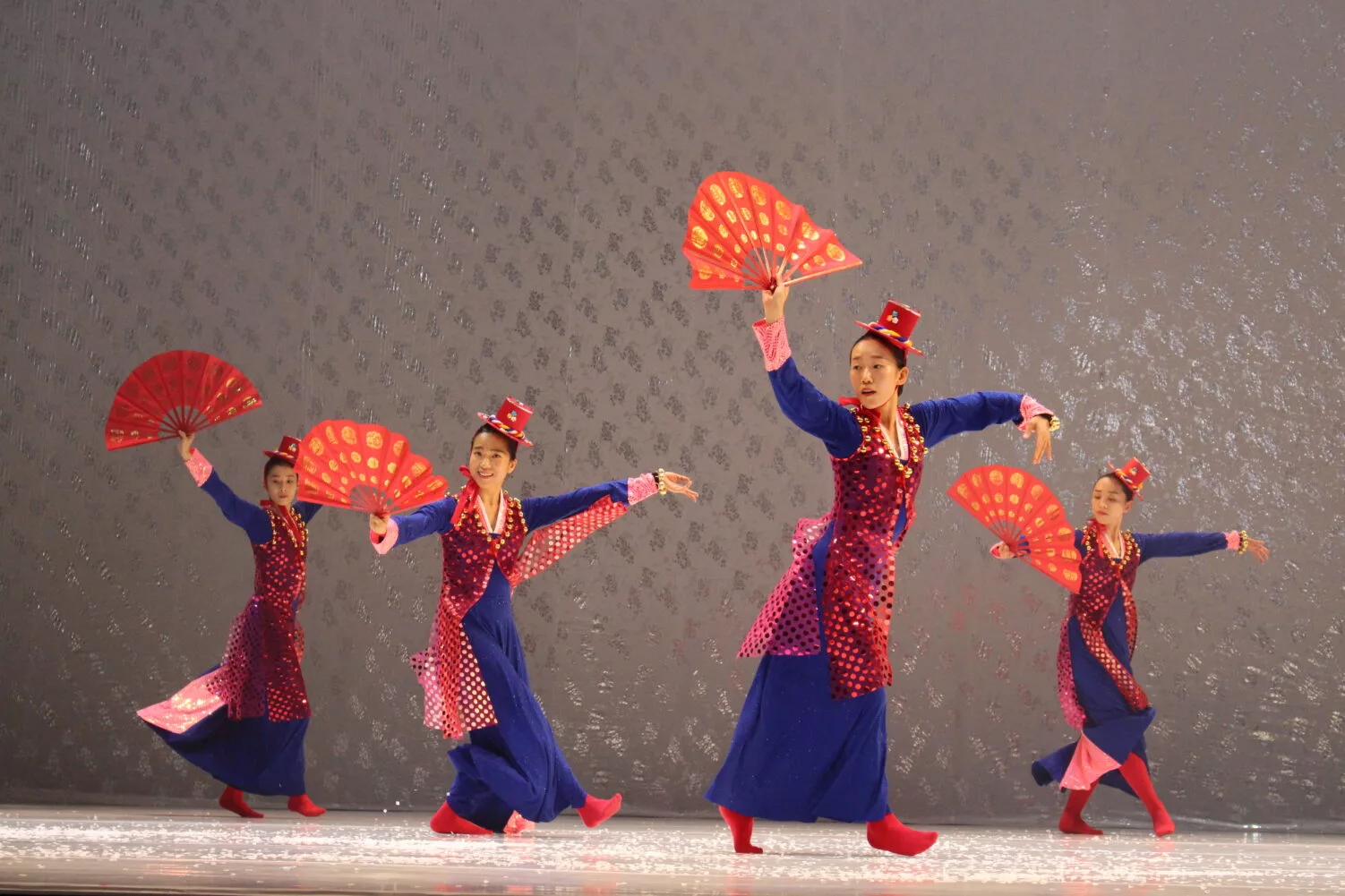
Park Nights performers are similarly encouraged to find their own way to inhabit the building. In Eun-Me Ahn’s performance, he tells me, she “plays the pavilion like an instrument.” Unlike many art galleries and performance venues, the space is far from being an anonymous shell. Obrist describes it as a “content machine”, with one wing containing a sound installation by Korean composer Jang Young-Gyu and another housing a library. The Auditorium wing, where the performances will take place, is open on both ends and has fuchsia-tinted windows on both sides, filtering the sunlight that comes in. For Obrist, this is far more interesting than a blank canvas-like space: “sometimes a performance or an exhibition can happen against the space, the space can give it tension or friction which can be interesting. Difficult spaces can be positive.”
By design, the architecture is a part of every performance, and Obrist makes an effort to put together events where many different types of creative practice can intermingle. “It’s important that we go beyond the silos,” he explains, something that he once thought the advent of the internet might help with by giving everyone access to a broad range of content — artistic, political and otherwise. In reality, things unfolded differently. Now, recommendation algorithms tend to get to know what we like and feed us more of the same, serving to retract our horizons rather than expanding them — placing us in ever-deepening trenches that Obrist, after writer Eli Pariser, calls filter bubbles.

He is especially keen for poetry to find a place in his archipelago of artistic expressions. He notes, offering Dada, Surrealism and Fluxus as examples, that almost every artistic movement of the 20th century included poets, a rarity today. Following past performances from Precious Okoyomon, Linton Kwesi Johnson and Caleb Femi, he is excited to host this year a Park Night curated by Don Mee Choi, the Berlin-based poet and translator of the influential Korean writer Kim Hyesoon. His dream performance? “I think a Lana Del Rey poetry reading in the pavilion would be very beautiful.”
His hopes for cross-pollination in the pavilion go beyond human artistic and performance practices: “It is important that we think not only into anthropocentric festivals,” he says, “but also into interspecies dialogue.” He tells me about writer and activist Alexis Pauline Gumbs’ call for us to find a way to be in communion with the natural world. It sounds hokey at first, but this intersection of performance and environment is really unavoidable inside the pavilion. “The wind, the sun, the rain, the chance encounters” can’t help but find their way into the Auditorium, and Obrist would prefer to treat them as a part of the show than as a distraction.
Writer J. G. Ballard once told Obrist that he should call what he does “junction-making,” building intersections between different artists and ideas. As our conversation continues, junctions keep on materialising: music, architecture, poetry, running, dating, wind, rain. With every one our conversation grows outward. Eventually it becomes a sprawling map of intersecting roads, far too vast to map out under one title. His ideal festival turns out to be an all-encompassing experience that doesn’t begin and end with artists and musicians, as I expected it to. When I ask whether he’s satisfied with the state of his programming for Park Nights, if now might be a good time to relax his efforts, I know the answer before he says it. “There’s a lot of dreams,” he tells me, “curators have a lot of unrealised projects.”
Written by Phin Jennings
The next Park Nights event will be Temporal Magic, an evening of poetry bringing together performances by scholars including Anne Boyer, Don Mee Choi and Denise Riley.
find out more